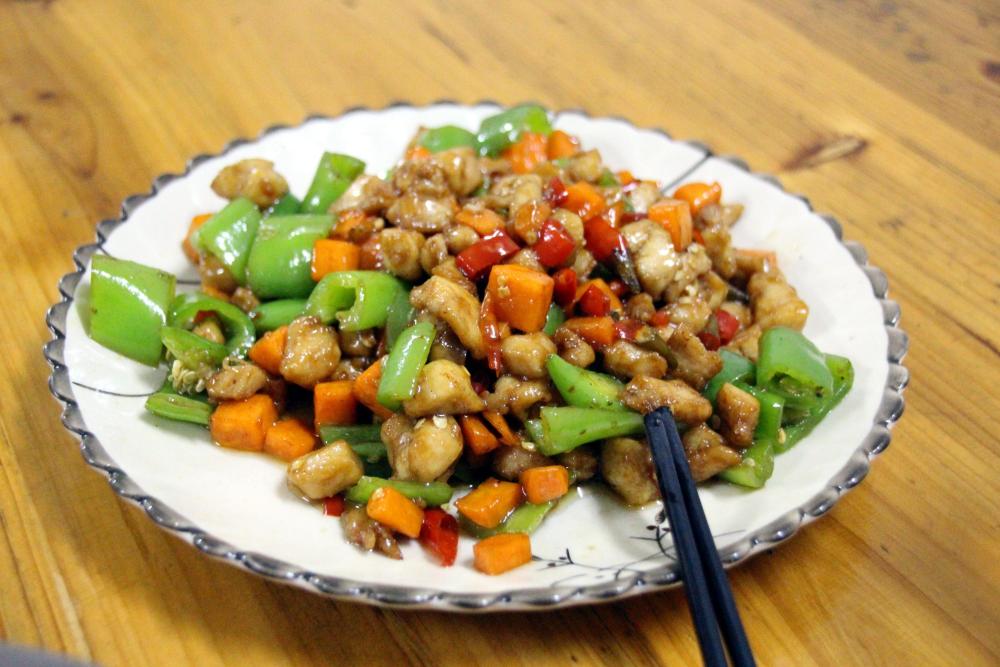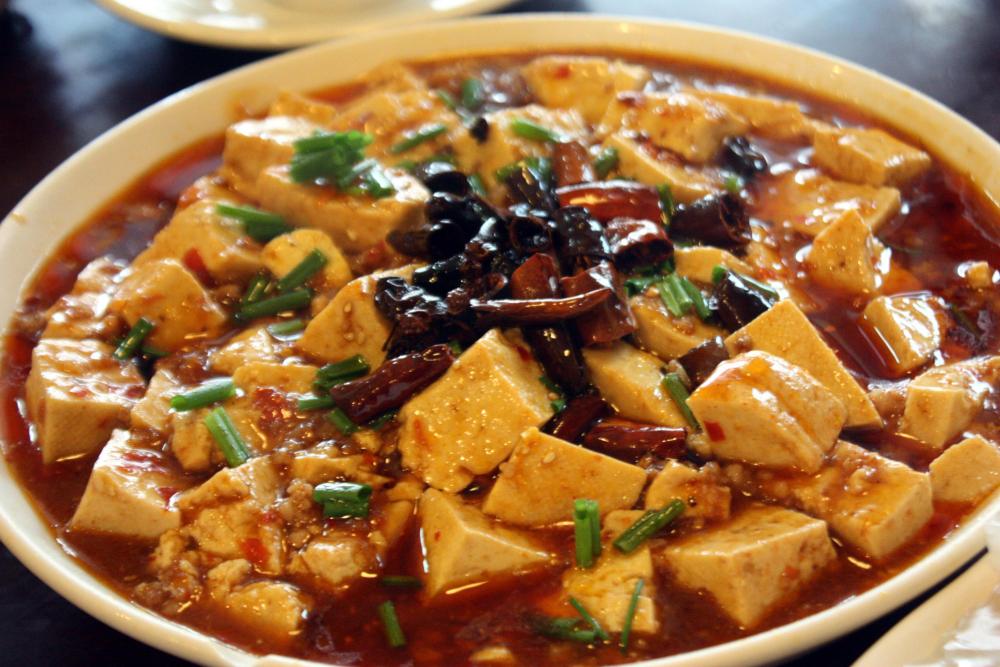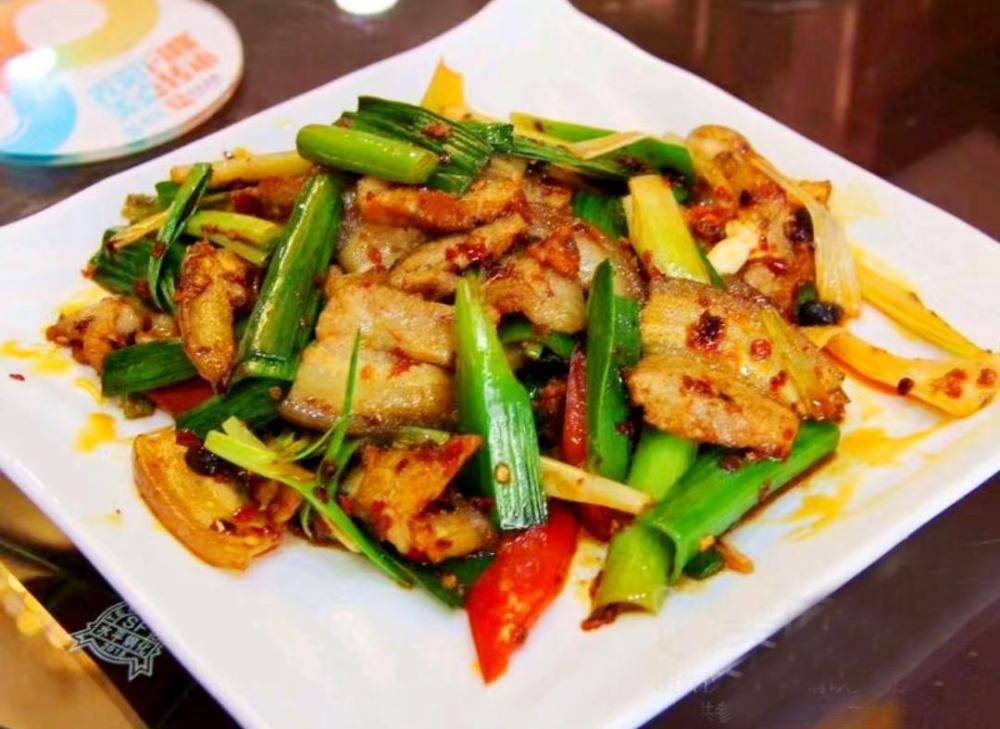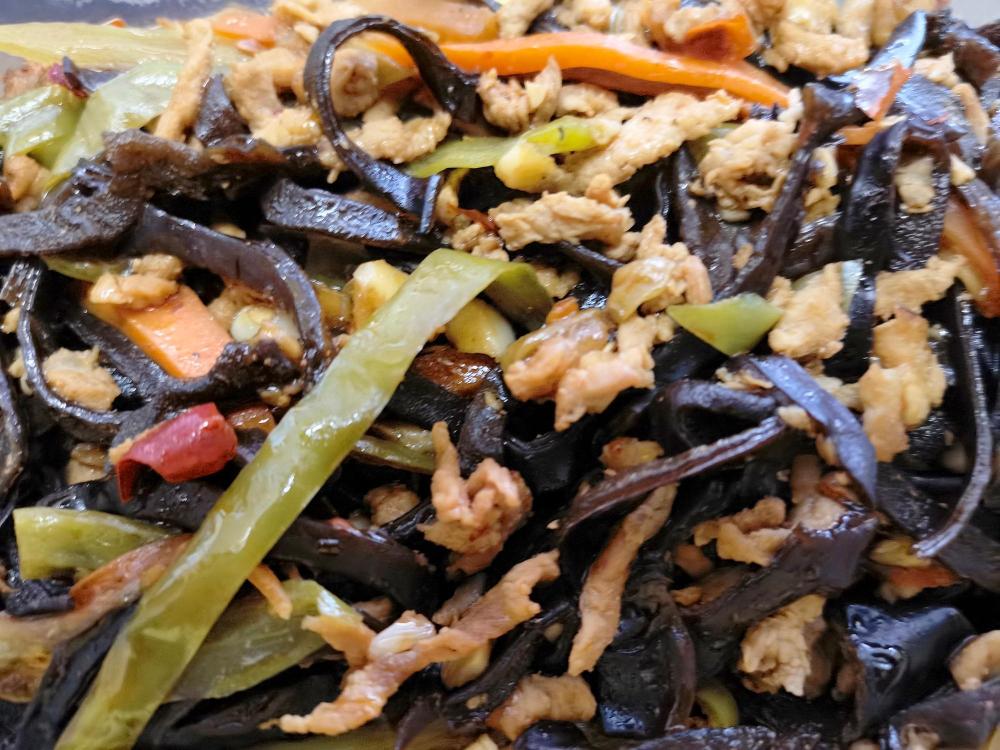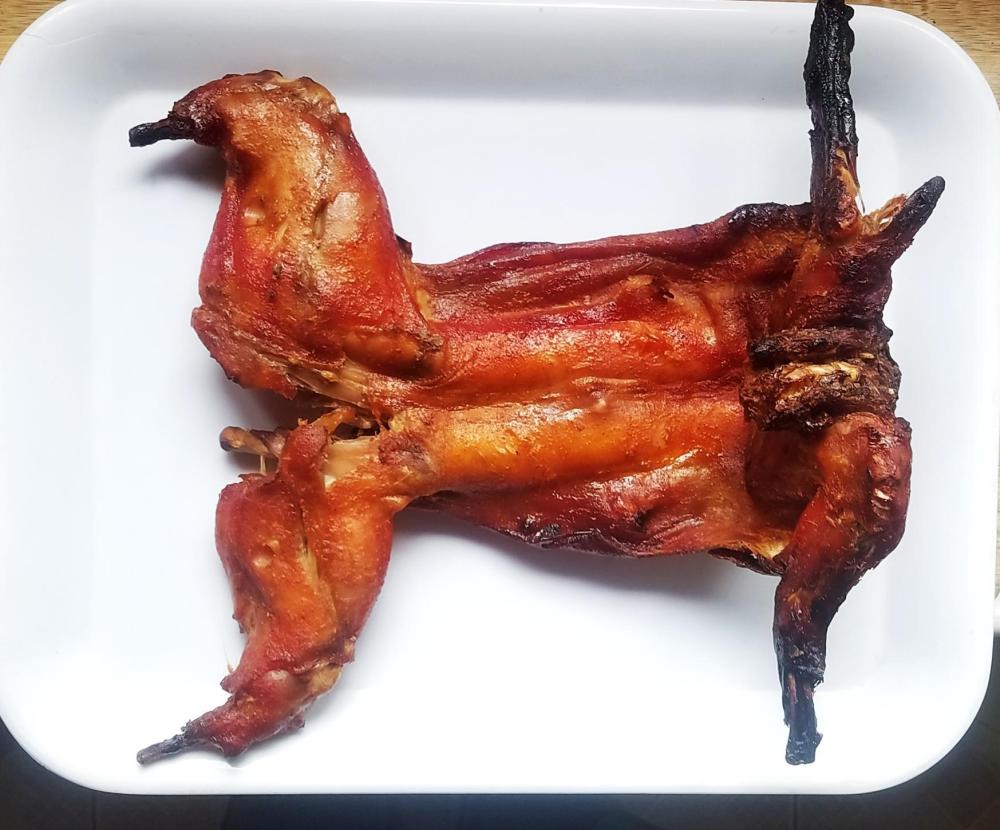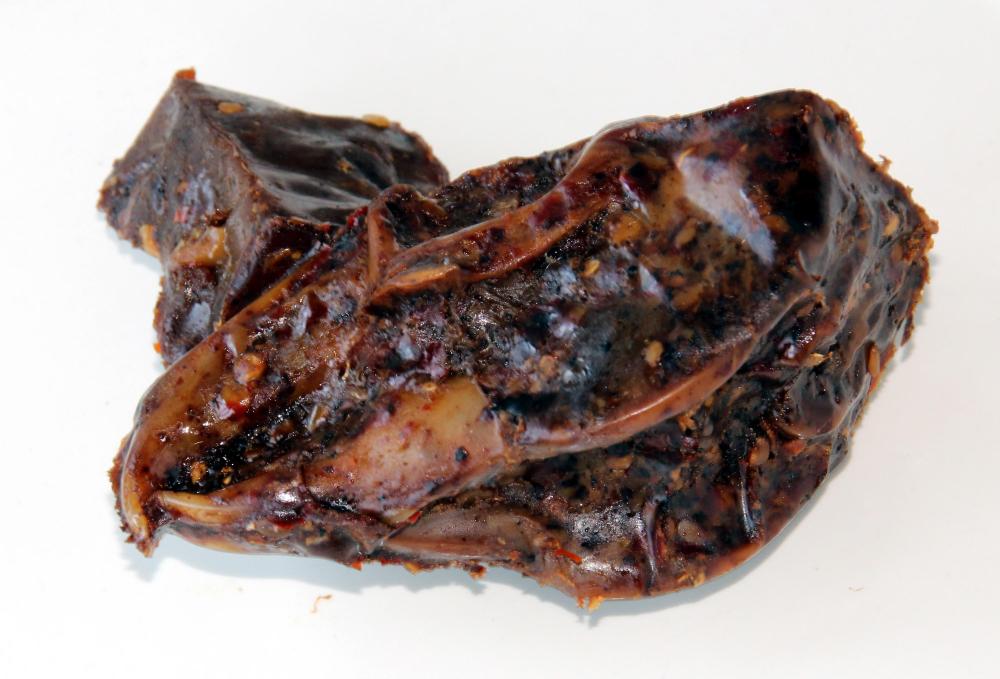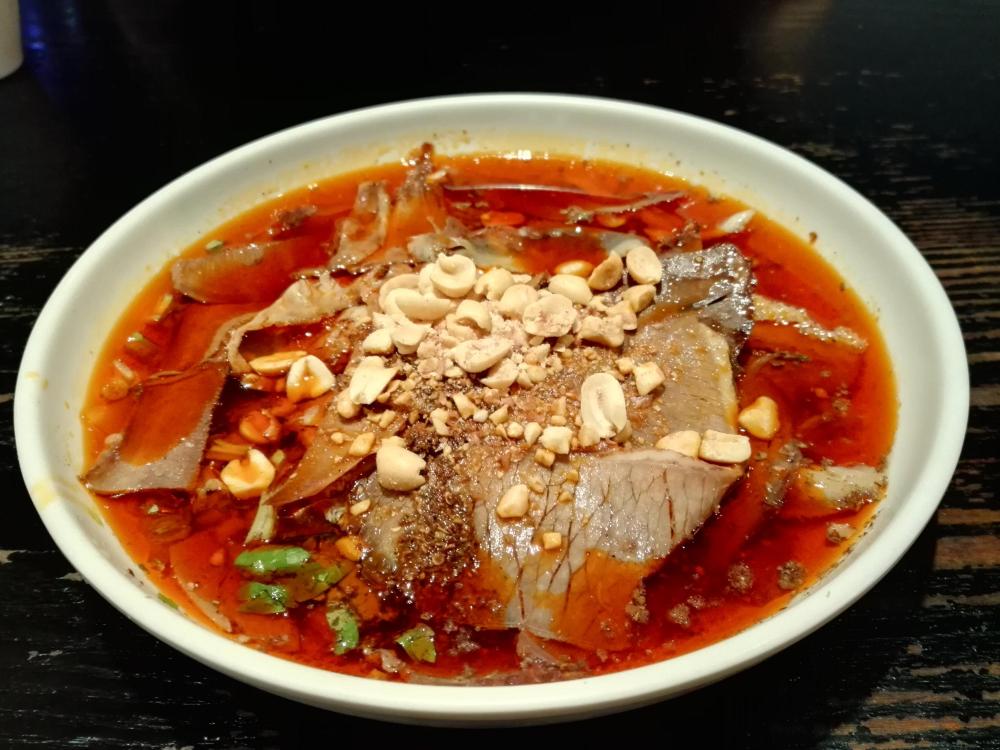川菜 (chuān cài) - Sichuan 四川 (sì chuān) Cuisine Part Two
I have no intention (or ability) to outshine Fuchsia Dunlop or anyone else, but I would like to make some observations on a few Sichuan dishes I know and love.
I am fairly certain that the most eaten Sichuan dish is what is usually referred to as Kung-po or Kung-pao chicken. In China, including Sichuan it is 宫保鸡丁 (gōng bǎo jī dīng), Gong Bao (pronounced ‘bow’ as in what you should do to the king, (baʊ) in IPA) Ji (as in Gee!, the expression of surprise (dʒiː)) Ding. It literally means ‘palace guardian chicken cubes’ and is said to be named after one 丁宝桢 (dīng bǎo zhēn), Ding Baozhen who was tutor to the emperor’s children, a job that carried the honorary title of ‘palace guardian’. This happened far away in Shandong and Tutor Ding was from Guizhou province, although he did move to Sichuan in 1876. The dish is certainly Sichuanese (and supposedly Ding’s favourite) but most versions in the west are noticeably sweeter than in Sichuan. The peanuts are sometimes replaced by cashews in western restaurants but this is not traditional, although I have seen them replaced by carrot in Sichuan – again not traditional.
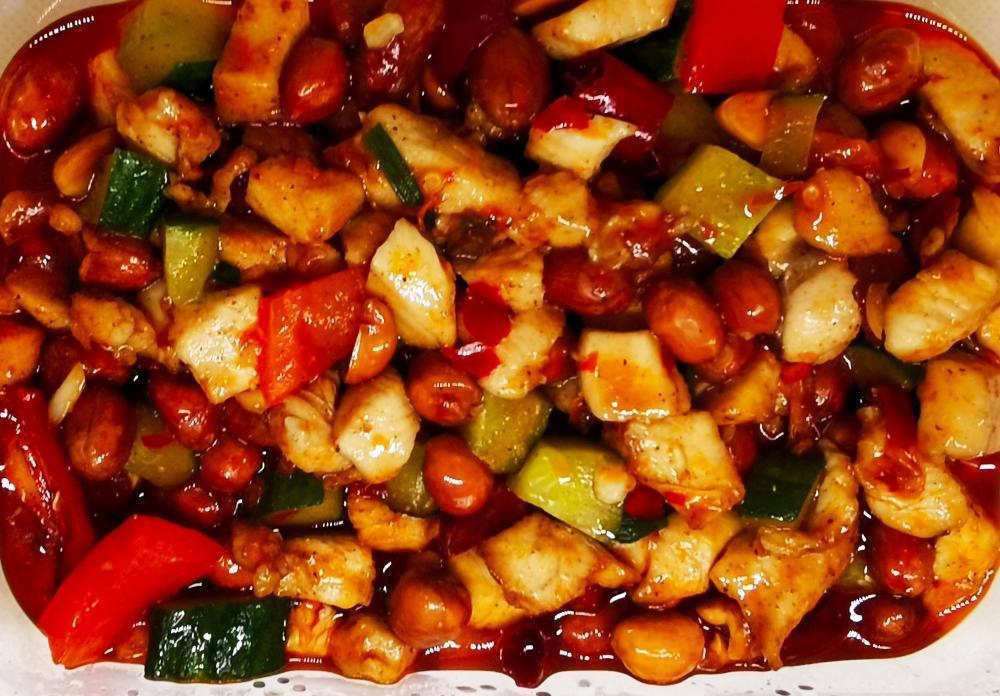
Gong Bao Chicken
Gongbao Chicken with Carrots instead of Peanuts
The other popular dish internationally is 麻婆豆腐 (má pó dòu fǔ). Known in the west as Mapo Tofu, it is often made using pork outside China, but traditionally is a beef and tofu dish. Vegetarian versions are called 麻辣豆腐 (má là dòu fu). Those who complain that tofu is bland and boring haven’t eaten mapo tofu.. The unrestrained use of chilli, doubanjiang and Sichuan peppercorns permeates the mouth melting tofu.
Mapo Tofu
Other classic dishes using a Sichuanese technique are called 回锅 (huí guō) which literally means ‘back to the pan’ but is usually translated as ‘twice cooked’ or ‘double cooked’. By far the most common is 回锅肉 (huí guō ròu), Twice Cooked Pork. The technique is believed to date back to the Song dynasty, (960–1279), but the dish would have been very different then; chillies were still 500 years away from arriving in Sichuan. Doubanjiang contains chillies, so it wasn’t available either.
Today, chunks of fatty pork belly are first simmered in water for around 30 minutes with garlic, garlic shoots, ginger, Sichuan peppercorns, green onions and Shaoxing wine, then left to cool before being thinly sliced. It is then stir-fried with more garlic, ginger, green onion, green chilli, doubanjiang, fermented back beans, soy sauce and a touch of sugar.
Twice-Cooked Pork Belly
鱼香 (yú xiāng) is another Sichuan technique of note. Literally if means ‘fish fragrant’, but contains no fish. Rather fish fragrant dishes are made using ingredients and flavours more commonly used in cooking fish. It employs a seasoning that typically contains garlic, scallions, ginger, sugar, salt and chilli. 鱼香肉片 (yú xiāng ròu piān), fish fragrant pork slices and 鱼香茄子 (yú xiāng qié zi), fish flavour eggplant are the most common dishes using this technique.
Fish Fragrant Pork
水煮 (shuǐ zhū) is yet another Sichuan technique. It literally means ‘water boiled‘, but is much more than that. Some websites claim it is ‘boiling in oil’ – total nonsense. The two favourite dishes to use the technique are 水煮鱼 (shuǐ zhǔ yú) and 水猪牛 (shuǐ zhū niú). The relevant proteins are boiled in chicken stock, flavoured with chilli, Sichuan peppercorns, chilli oil and doubanjiang along with vegetables (especially bean sprouts in the fish version). The ’boiling in oil’ myth arises from the dish having hot oil poured over it immediately before serving, resulting in a sizzling sound when it is presented to the table. Fuchsia Dunlop calls the fish version ‘Boiled Fish in a Seething Sea of Chillies’ and the beef version ‘Boiled Beef Slices in a Fiery Sauce’. Her book (see below for link) has recipes for both.
'Water Boiled' Beef
My favourite Sichuan dish is not actually from Sichuan, but Chongqing next door. However, it was part of Sichuan until 1997 when it was made a Municipality of its own, coming under the direct control of Beijing. It remains however inextricably linked to Sichuan cuisine. The dish is 辣子鸡 (là zi jī), chilli chicken. Fuchsia Dunlop refers to it as 'Chongqing chicken with chillies'. This formidable looking dish uses 50 grams or more of chillies to 500 grams of chicken meat, preferably dark meat from the legs, but sometimes breast. The chillies are not to be eaten, but it is fun digging out the cubes of meat hiding in the mountain of chillies which have imparted their flavour to the dish. This is a dish I often make at home.
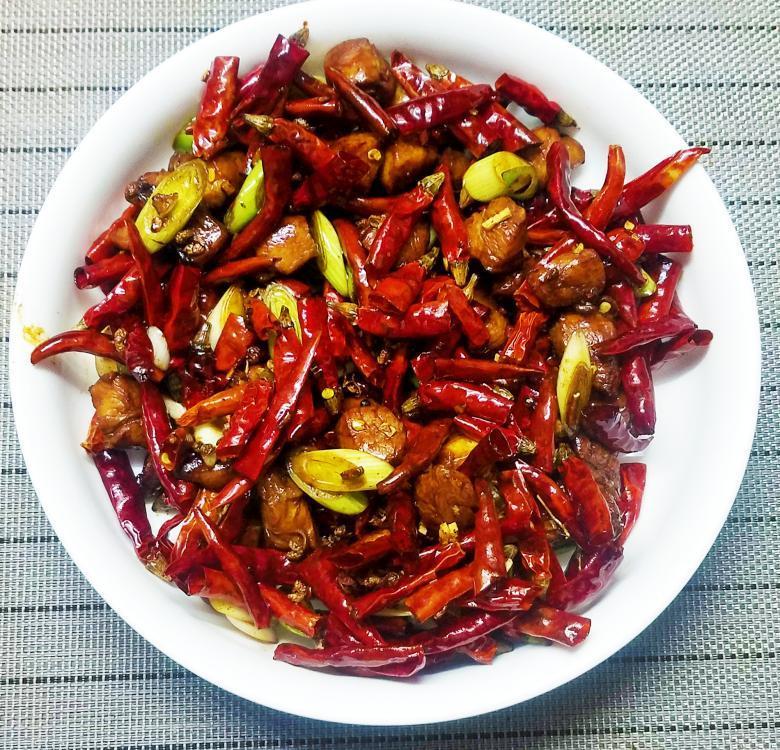
Laziji
兔子 (tù zi), rabbit is incredibly popular in Sichuan. 70% of China’s rabbits end up in Sichuan stomachs and have to be supplemented by imported rabbits, mainly from France. I have made a version of 辣子鸡 (là zi jī) using rabbit instead of the usual chicken. 辣子兔 (là zi tù), I suppose. It is roasted and also used in many dishes. I ate rabbit noodles in Sichuan a few years ago. But a huge favourite, especially in the capital, Chengdu is 麻辣兔头 (má là tù tóu), hot and numbing rabbit head. This street food is hugely popular and can also be found in restaurants.
Roast Rabbit
Mala Rabbit Head
夫妻肺片 (fū qī fèi piàn), literally ‘husband and wife lung slices’, despite the name, does not include any lungs. It is a cold dish of sliced beef with sliced heart, tongue, and tripe finished with peanuts, Chinese celery, chilli oil and Sichuan peppercorns. Supposedly invented by Guo Chaohua and his wife in the 1930s, it was originally a Chengdu street food but later made its way to the dining table.
自贡 (zì gòng) Zigong, a city in southern Sichuan has been a major salt producing area for around 2,000 years and is well known as such throughout China. It is also known for having some of Sichuan's spiciest food. 自贡盐煎肉 (zì gòng yán jiān ròu), Zigong Salt Fried Pork is lean pork slices marinated with onion and fresh green chillies, then pan fried with dried red chillies, rice wine, fermented black beans, doubanjiang bean paste, salt and sesame seeds, then finished with red chilli oil.
My favourite Sichuan restaurant in Liuzhou is near my old second home in the countryside north of the city. It is a husband and wife operation with the man doing the cooking and the wife handling front of house assisted by young students from the nearby colleges. Lovely couple from a small village in Sichuan. I remember well the day I noticed a strange dish on their menu. 外婆飘香骨 (wài pó piāo xiāng gǔ) translates as ‘Maternal Grandmothers Fluttering Fragrant Bones'! I was baffled, so immediately ordered it, as you do. It was of course pork ribs with chilli and more chilli along with the usual Sichuan peppercorns etc. And absolutely delicious. I ordered it often.
Granny's Bones
However, probably the favourite Sichuan food in China is 四川火锅 (sì chuān huǒ guō), Sichuan Hotpot , also described as 重庆火锅 (chóng qìng huǒ guō), Chongqing Hotpot. There is some justification in Chongqing claiming to own it. It originated among boatmen on the Yangtze River which does flow past Chongqing, but the concept rapidly spread throughout Sichuan and then the rest of China, then the world. Hotpot dining is very much a communal affair; friends and families gather together round a table containing a large 阴阳 (yīn yáng) pot containing two broths, one spicy, one plainer. They gather or are brought sticks of thinly sliced meats, offal, tofu, mushrooms and vegetables and cook these themselves in the broth of their choice. There is a basic charge for the broth, then the number of empty sticks you have on the table is used to calculate the final bill, over which everyone fights to pay. All great fun. The last time I had it was with friends in Guilin and I could feel the chilli and Sichuan Peppercorns running through my veins for days!
Enjoying Hotpot
Yin-Yang Pot
Things on Sticks
The Bill
Recipes for most of the dishes I have mentioned can be found in Fuchsia Dunlop's The Food of Sichuan (eG-friendly Amazon.com link). No mention of Granny's bones, though.


